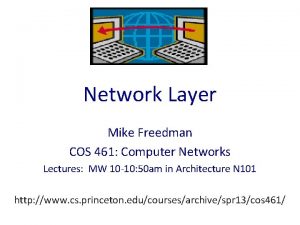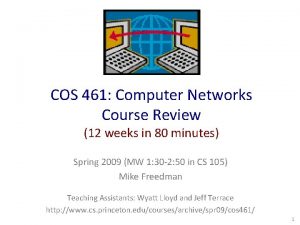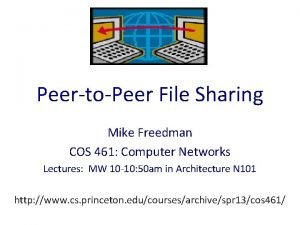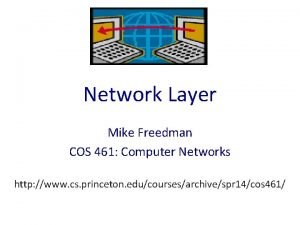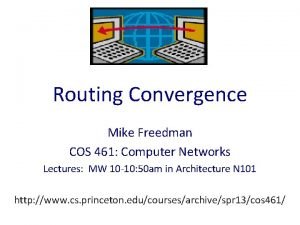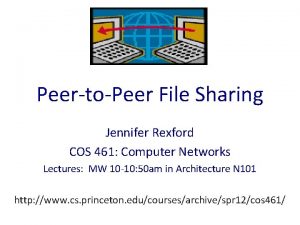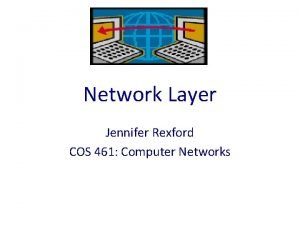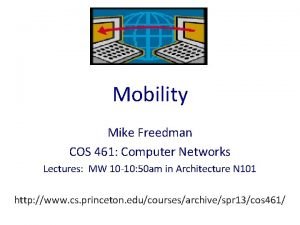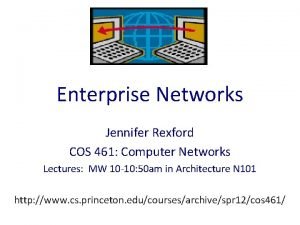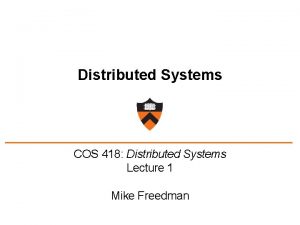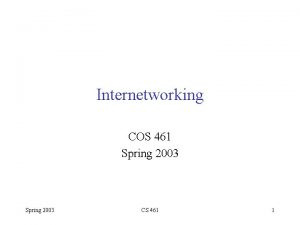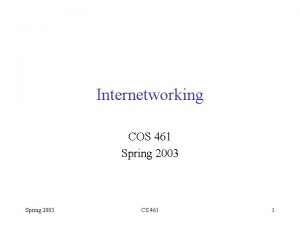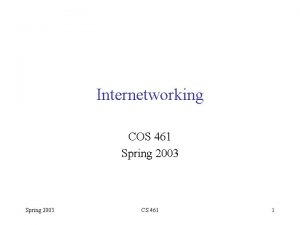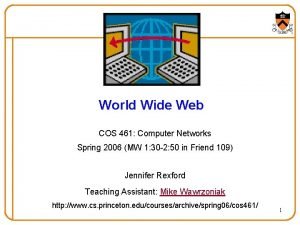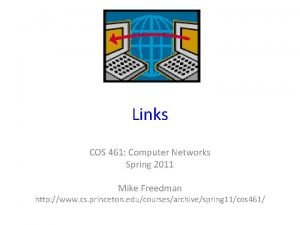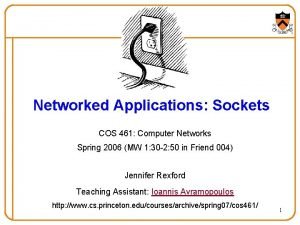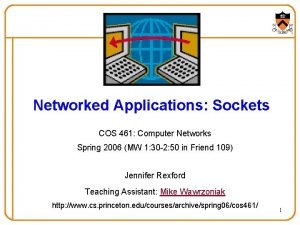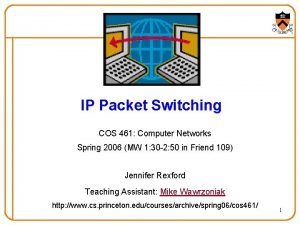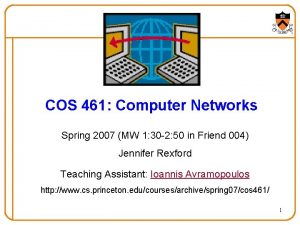Introduction Continued COS 461 Spring 2003 CS 461

















- Slides: 17

Introduction, Continued COS 461 Spring 2003 CS 461 1

Mechanics • Forgot to cite worm text – ZDNet • Books (should be) on reserve in eng library – Peterson/Davie text – TCP/IP Illustrated (vol 1 & 2) • New room • Web page mostly up – Notify me with errors/questions – Reading assignments shown (2. 1 -2. 5 for next time) Spring 2003 CS 461 2

Computer Lab • • Friend 010 (Fishbowl) Machines will be reformatted You’ll have “root” access – superuser Currently, very few info e-mails – Send them now – This is how your accounts get established Spring 2003 CS 461 3

Grading • Grade breakdown – 65% projects – 35% exams (in-class midterm, final format? ) • Audit – Audit credit = take exams, skip projects • Projects – First one solo, rest in pairs – Builds system progressively Spring 2003 CS 461 4

Layering • Use abstractions to hide complexity • Abstraction naturally lead to layering • Alternative abstractions at each layer Application programs Request/reply Message stream channel Host-to-host connectivity Hardware Spring 2003 CS 461 5

Protocols • Building blocks of a network architecture • Each protocol object has two different interfaces – service interface: operations on this protocol – peer-to-peer interface: messages exchanged with peer • Term “protocol” is overloaded – specification of peer-to-peer interface – module that implements this interface Spring 2003 CS 461 6

Interfaces Host 1 High-level object Protocol Spring 2003 Host 2 Service interface Peer-to-peer interface CS 461 High-level object Protocol 7

Protocol Machinery • Protocol Graph – most peer-to-peer communication is indirect – peer-to-peer is direct only at hardware level Host 2 Host 1 Digital Video File library application RRP Digital Video File library application MSP RRP HHP Spring 2003 MSP HHP CS 461 8

Machinery (cont) • Multiplexing and Demultiplexing (demux key) • Encapsulation (header/body) Host 1 Host 2 Application program Data RRP RRP Data HHP HHP RRP Data Spring 2003 CS 461 9

Internet Architecture • Defined by Internet Engineering Task Force (IETF) • Hourglass Design • Application vs Application Protocol (FTP, HTTP) FTP HTTP NV TFTP UDP TCP IP NET 1 Spring 2003 NET 2 CS 461 … NETn 10

ISO Architecture End host Application Presentation Session Transport Network Data link Physical One or more nodes within the network Spring 2003 CS 461 11

Performance Metrics • Bandwidth (throughput) – data transmitted per time unit – link versus end-to-end – notation • KB = 210 bytes • Mbps = 106 bits per second • Latency (delay) – time to send message from point A to point B – one-way versus round-trip time (RTT) – components Latency = Propagation + Transmit + Queue Propagation = Distance / c Transmit = Size / Bandwidth Spring 2003 CS 461 12

Bandwidth versus Latency • Relative importance – 1 -byte: 1 ms vs 100 ms dominates 1 Mbps vs 100 Mbps – 25 MB: 1 Mbps vs 100 Mbps dominates 1 ms vs 100 ms • Infinite bandwidth – RTT dominates • Throughput = Transfer. Size / Transfer. Time • Transfer. Time = RTT + 1/Bandwidth x Transfer. Size – 1 -MB file to 1 -Gbps link as 1 -KB packet to 1 -Mbps link Spring 2003 CS 461 13

Delay x Bandwidth Product • Amount of data “in flight” or “in the pipe” • Usually relative to RTT • Example: 100 ms x 45 Mbps = 560 KB Spring 2003 CS 461 14

Socket API • Creating a socket int socket(int domain, int type, int protocol) • domain = PF_INET, PF_UNIX • type = SOCK_STREAM, SOCK_DGRAM, SOCK_RAW • Passive Open (on server) int bind(int socket, struct sockaddr *addr, int addr_len) int listen(int socket, int backlog) int accept(int socket, struct sockaddr *addr, int addr_len) Spring 2003 CS 461 15

Sockets (cont) • Active Open (on client) int connect(int socket, struct sockaddr *addr, int addr_len) • Sending/Receiving Messages int send(int socket, char *msg, int mlen, int flags) int recv(int socket, char *buf, int blen, int flags) Spring 2003 CS 461 16

Protocol-to-Protocol Interface • Configure multiple layers – static versus extensible • Process Model – avoid context switches • Buffer Model – avoid data copies Spring 2003 CS 461 17


